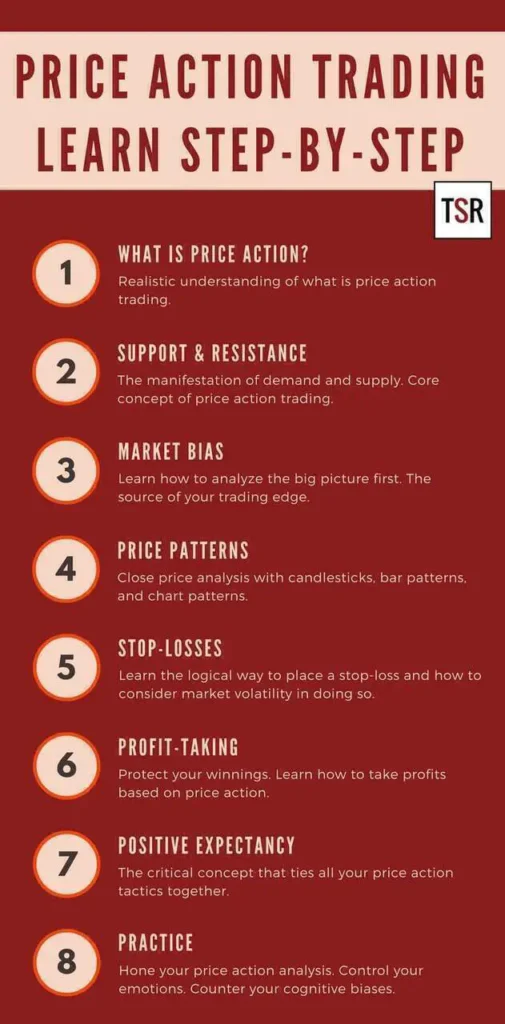Forex trading for beginners

Step-by-Step Trading Tutorials for Beginners
Introduction
Trading in financial markets can be an exciting and potentially lucrative endeavor. However, for beginners, it can also be overwhelming and confusing. That's why step-by-step tutorials are essential for those who are new to trading. These tutorials provide a structured learning experience, guiding beginners through the basics and helping them gain the necessary knowledge and skills to start trading confidently.
The Basics of Trading

Understanding the basics of trading is crucial for beginners. It involves learning about different financial instruments, such as stocks, bonds, commodities, and currencies, and how they are traded in various markets. Beginners should also familiarize themselves with key trading concepts, including market orders, limit orders, and stop-loss orders.
Choosing a Trading Strategy
Once beginners have a solid understanding of the basics, they can start exploring different trading strategies. These strategies can be based on technical analysis, fundamental analysis, or a combination of both. Technical analysis involves studying charts and patterns to predict future price movements, while fundamental analysis involves analyzing economic indicators and company financials to identify potential trading opportunities.
Opening a Trading Account
To start trading, beginners need to open a trading account with a reputable broker. They should research and compare different brokers to find one that suits their needs. When opening an account, beginners will need to provide personal information and complete the necessary paperwork. It's important to choose a broker that offers a user-friendly trading platform and provides access to a wide range of financial instruments.
Practicing with a Demo Account
Before risking real money, beginners should practice trading with a demo account. A demo account allows them to simulate real trading conditions without the risk of losing money. It's an excellent way to test different trading strategies and gain practical experience. Beginners can use the demo account to practice placing trades, managing risk, and analyzing market trends.

Continued Learning and Improvement
Trading is a continuous learning process, and beginners should never stop acquiring knowledge and improving their skills. They can continue their education through online courses, books, and webinars. It's also beneficial to join trading communities and forums to interact with experienced traders and learn from their insights and experiences.
Navigating the Financial Markets with Confidence
Entering the world of trading can be both exciting and intimidating for beginners. To ensure a smooth initiation into this dynamic field, step-by-step tutorials play a crucial role in building foundational knowledge and confidence. In this article, we will guide beginners through essential steps, providing them with the knowledge needed to start their trading journey.
1. Understanding the Basics: Begin with a comprehensive overview of the basics of trading. Define key terms such as stocks, bonds, forex, and cryptocurrencies. Explore the different types of markets and understand how they operate.
2. Setting Up a Trading Account: Walk beginners through the process of setting up a trading account. This includes choosing a reliable brokerage, completing the necessary paperwork, and understanding account features.
3. Introduction to Market Analysis: Provide a breakdown of fundamental and technical analysis. Explain how fundamental analysis involves evaluating a company's financial health, while technical analysis focuses on price charts and patterns.
4. Risk Management: Emphasize the importance of risk management. Beginners should learn about setting stop-loss orders, determining position sizes, and calculating potential losses before entering a trade.
5. Exploring Trading Platforms: Guide beginners through popular trading platforms. Offer step-by-step tutorials on platform navigation, order execution, and the utilization of essential tools for analysis.
6. Practicing with Demo Accounts: Encourage the use of demo accounts for hands-on practice. This allows beginners to execute trades in a risk-free environment and familiarize themselves with the trading platform.
7. Building a Trading Plan: Assist beginners in crafting a solid trading plan. This plan should include clear goals, risk tolerance, and strategies for entering and exiting trades.
8. Understanding Different Trading Styles: Introduce various trading styles, such as day trading, swing trading, and long-term investing. Help beginners identify a style that aligns with their preferences and lifestyle.
9. Analyzing Candlestick Patterns: Delve into the world of candlestick patterns. Provide tutorials on how to recognize common patterns and interpret them for effective decision-making.
10. Diving into Technical Indicators: Explain the use of technical indicators like Moving Averages, Relative Strength Index (RSI), and MACD. Offer step-by-step guides on adding and interpreting these indicators on charts.
Conclusion
Step-by-step tutorials are invaluable for beginners in trading. By following a structured learning path, beginners can gain the necessary knowledge and confidence to start trading. It's important to understand the basics, choose a suitable trading strategy, open a trading account, practice with a demo account, and continuously learn and improve. With dedication and perseverance, beginners can navigate the world of trading and potentially achieve their financial goals.

Leave a Reply